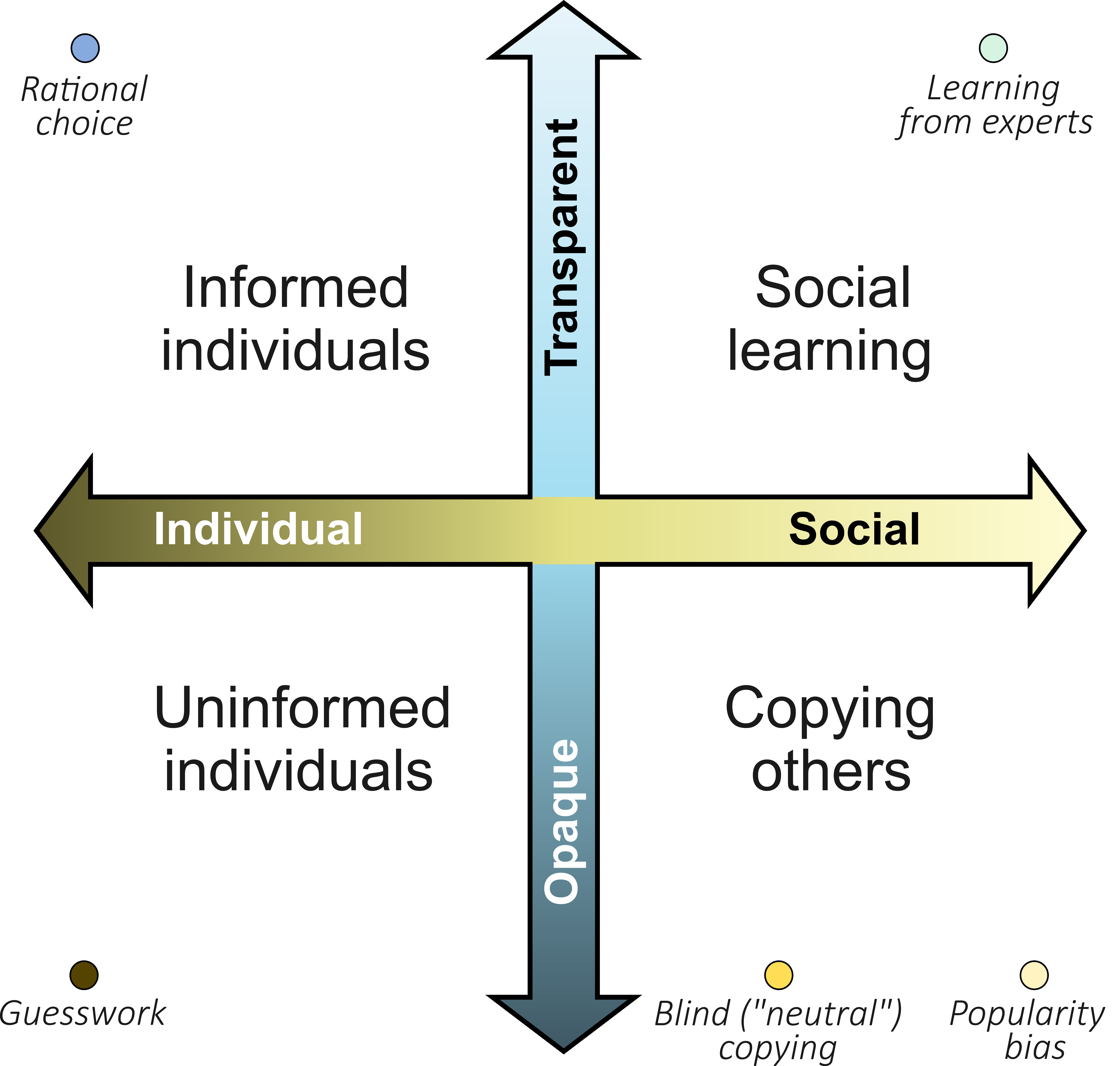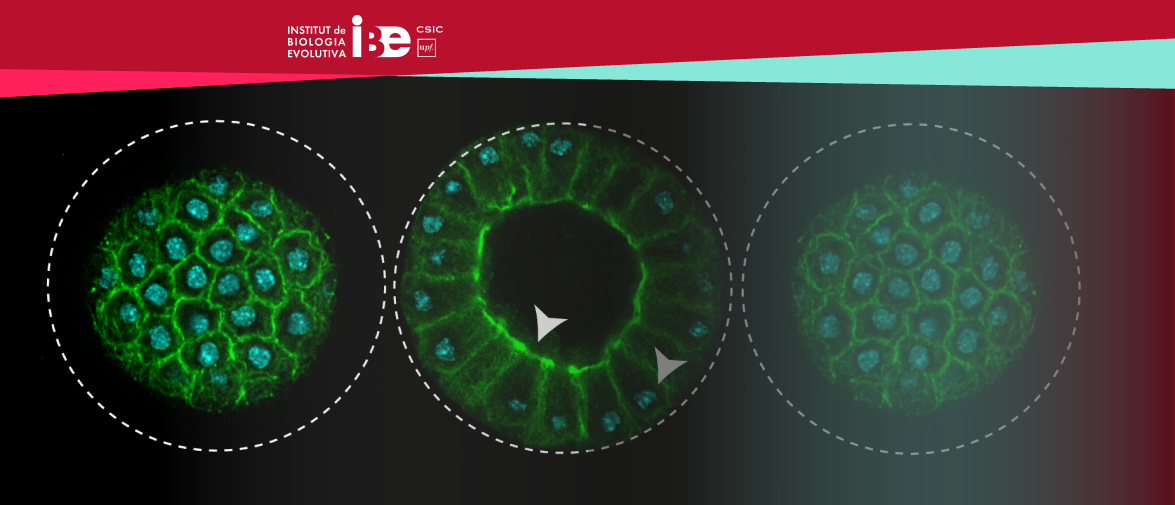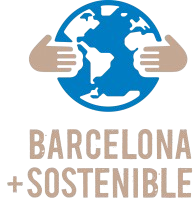Imitation and access to information determine the evolution of society
An international study led by the Institute of Evolutionary Biology (IBE, CSIC-UPF) discovers how imitation and access to information have determined the pace and manner of social evolution and also how it can be anticipated.
In recent years, cultural evolution has stepped on the accelerator in much of the world thanks to new technologies and globalization. However, according to this study, it could stagnate due to excessive imitation of others, the lack of access to truthful information, and a bigger population size due to globalization. In this way, the model could explain "social contagion" phenomena such as anti-vaccine movements or the rejection of masks during COVID-19, thus avoiding its negative consequences.
The study published in the Journal of The Royal Society Interface in November 2022 predicts the pace and mode of cultural evolution based on three parameters: social learning, that is, our natural tendency to imitate others (technically, popularity or imitation bias), the individual access we have to truthful information (degree of transparency), and the size of the population. By combining these three factors, the theory makes it possible to study our past and explain why there are long periods of stagnation followed by sudden changes, such as the invention of penicillin, the steam train, or the printing press.
Although these cultural leaps were observed before, this is the first model to define them through punctuated evolution. This study is a major departure from traditional models, which often focus on gradual evolution and cannot account for sudden changes. The new theory includes the three main parameters (imitation, transparency, and population) independently, which generates more flexible predictions and results than the previous one, also allowing us to observe the slowdown in evolution and its jumps.
How does the model work?
Imitation and access to information determine the adoption of new technologies
The study confirms the key role of imitation in social learning. This natural tendency in humans (and other animals) can drive the advancement of knowledge when combined with good access to information, that is, with transparency. The invention of the wheel, for example, promoted the evolution of the entire society. It is an invention easy to explain and has clear advantages (high transparency). On the other hand, the tendency to imitate a very successful behaviour would have allowed its popularization.
When imitation is excessive, however, a popularity bias is generated and, added to the lack of transparency, can stop the advance of knowledge. In this scenario, new and beneficial inventions come up against the so-called "utility barrier". The barrier generates when individuals do not have good access to information about the benefits of the invention, while the imitation of practices of less interest (or even harmful) is favoured.

Graphic representation of the mathematical model of Blai Vidiella, the first author of the study.
This theory could explain why 19th-century medicine rejected antiseptic practices in the first place. Washing hands to attend childbirth is an antiseptic measure proposed in Vienna in 1847 by Dr. Ignaz Semmelweis. Although the doctor demonstrated that this practice reduced mortality in childbirth, it was widely rejected by other doctors.
The model would explain this phenomenon with a lack of transparency and excessive imitation: microbes were still widely unknown, and therefore doctors could not understand the need for this practice (ie, there was low transparency). At the same time, the popularity bias caused doctors to follow the common practice of most professionals, who despised hygiene.
Increases in imitation can generate a punctuated evolution, with long periods of stagnation until reaching the invention or innovation that drives the knowledge of the species with a notable leap. However, before each great leap in social learning, such as the transition from fossil to clean energy, an increase in the diversity of options can be detected.
So, for a technology or an idea to be adopted, it needs to be explained and people have to imitate it, but the size of the population also plays a major role.
The size of the population determines the advancement of knowledge
This theory can help resolve the debate about population effects on social evolution. While it is true that in a large population, the number of new and beneficial inventions is probably higher, the theory suggests that with the number of people, the difficulty to innovate also increases. The more uninformed people there are, the harder it is to bring about change. This happens because the utility barrier increases with the size of the population, and for this reason, much more transparency is needed to overcome it, that is, much more communication. This result suggests the existence of an optimal balance between the three factors that determine social learning.
The punctuated evolution model to study the future of cultural evolution
The punctuated evolution model could also be used to analyze current innovations and study the causes of their adoption or rejection by society. It can also be used to determine the factors on which their adoption will depend.
“During the beginning of the COVID pandemic, information on the benefits of masks was scarce, which generated a lack of transparency that, added to imitation, led to the rejection of this tool and its usefulness. This model can help us understand why there is acceptance or rejection of technological advances according to these factors and, therefore, to help prevent these phenomena." Points out Sergi Valverde, Principal Investigator of the IBE who has led the Project.
“We still don't know when renewable energies will be introduced, but the model can tell us what a factors it depends on what is the utility barrier that they have to overcome to be socially accepted, what would be the level of transparency necessary and how many people would have to adopt them to generate a global change.” Adds Blai Vidiella, Postdoctoral Researcher at IBE and first author of the article.
Reference article: Vidiella, B., Carrignon, S., Bentley, R. A., O’Brien, M. J., & Valverde, S. (2022). A cultural evolutionary theory that explains both gradual and punctuated change. Journal of the Royal Society Interface, 19(196), 20220570. DOI:https://doi.org/10.1098/rsif.2022.05700






















